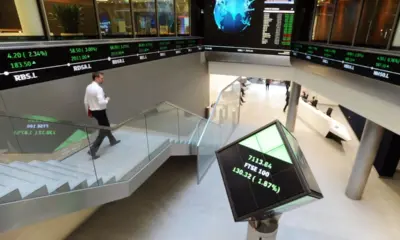Technology
AI and Automation in the UK Labor Market Forecast 2026

Artificial intelligence and automation are redefining the structure of the UK labor market as the country moves into 2026. With industries ranging from finance to manufacturing accelerating digital transformation, the government and private sector are working to balance productivity gains with job stability.
According to the Department for Science, Innovation and Technology, AI-driven automation could boost national productivity by 1.5 percent annually through 2030. However, the same report warns that up to 1.2 million workers may need retraining to adapt to emerging technologies.
Transformation Across Core Sectors
The integration of automation is particularly visible in logistics, healthcare, and customer service. Autonomous delivery vehicles, robotic warehouses, and machine-learning scheduling systems have become mainstream across major UK cities.
In healthcare, hospitals are adopting AI for diagnostics, imaging analysis, and patient management. These technologies reduce administrative burdens and enhance accuracy in clinical decision-making. Meanwhile, financial institutions are deploying AI to detect fraud, manage credit risk, and improve compliance reporting.
Technology-Driven Employment Shifts
The rise of automation has created new roles in data science, robotics maintenance, and AI ethics. Yet, it has also displaced routine jobs in sectors such as retail and transportation. The UK’s Office for National Statistics estimates that around 7 percent of existing roles are at high risk of automation over the next decade.
The challenge, experts say, lies in ensuring equitable access to reskilling programs. Public and private partnerships are increasingly offering micro-credential courses and apprenticeships to help workers transition into technology-intensive fields.
Government Policy and Regulatory Response
The UK government has launched a comprehensive workforce adaptation framework to guide this transition. Under the 2026 Skills Modernization Act, new funding will be allocated to AI-related education and vocational training. Universities are also expanding partnerships with tech companies to align curricula with real-world industry needs.
Additionally, the Office for Artificial Intelligence has introduced ethical guidelines emphasizing human oversight, fairness, and transparency in automated systems. This approach aims to build public trust while encouraging responsible innovation.
London’s Role as a Digital Labor Hub
London remains the epicenter of the country’s AI revolution. The capital now hosts over 1,800 AI-focused startups, many of which specialize in generative AI, predictive analytics, and robotics.
The city’s fintech and professional services sectors are using AI to enhance productivity without reducing human input. Hybrid work models are increasingly powered by automation tools that handle repetitive administrative tasks, allowing employees to focus on complex problem-solving and creative work.
Impact on Wage Structures and Productivity
Automation has contributed to modest wage polarization. High-skill technical professionals are seeing increased earnings, while routine roles are experiencing slower wage growth. Economists note that this gap is a byproduct of the rapid adoption of technology that rewards analytical and creative capabilities.
Nevertheless, overall labor productivity has improved. Manufacturing output per worker has risen by 3.2 percent since 2023, largely due to AI-assisted machinery and predictive maintenance. Financial services have also recorded record efficiency levels, demonstrating that the economic payoff of automation is already materializing.
Ethical and Social Considerations
Beyond economic implications, the rise of automation raises questions about ethics and equality. Policymakers are debating how to ensure algorithmic accountability and prevent bias in AI decision-making. Civil society organizations have called for clearer oversight of automated hiring systems and facial recognition technologies.
The government’s latest consultation paper emphasizes the need to maintain “human-in-command” principles across sectors. It encourages firms to integrate transparency audits and algorithmic fairness assessments into their operational models.
The Future of Work and Hybrid Collaboration
The evolving labor landscape suggests that the UK’s future workforce will be more decentralized, digital, and adaptive. Hybrid collaboration—combining human expertise with machine precision—is becoming a defining feature of employment in 2026.
Companies are redesigning workflows to emphasize flexibility, creativity, and continuous learning. AI assistants and smart data systems are now embedded in most enterprise management structures, making collaboration more seamless across borders and time zones.
Preparing for Long-Term Economic Transition
Looking ahead, the success of the UK’s AI transformation will depend on sustained investment in education and infrastructure. The Treasury is considering additional tax incentives for firms investing in reskilling initiatives and AI research.
Experts predict that by 2030, automation could add 200 billion pounds to the national economy if managed responsibly. The key challenge remains ensuring that technological progress translates into inclusive growth, preserving both social stability and competitive advantage.




















